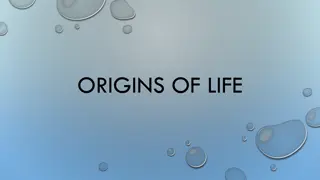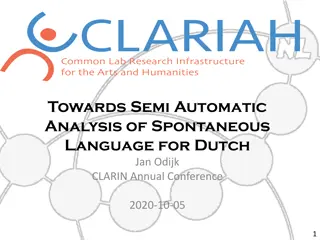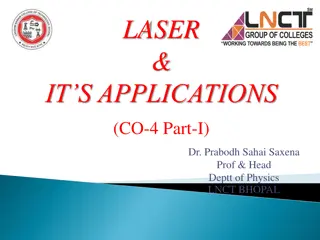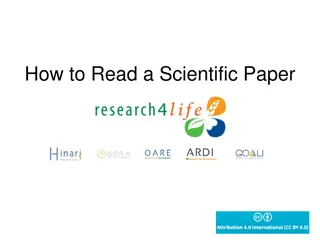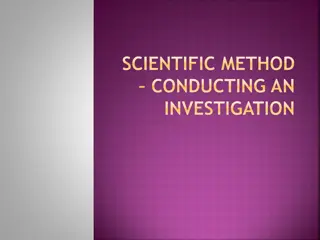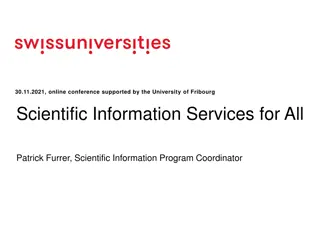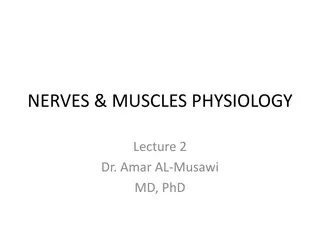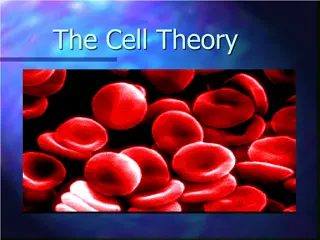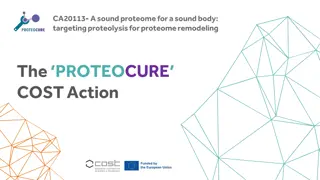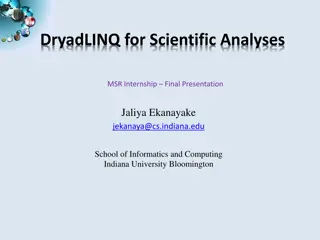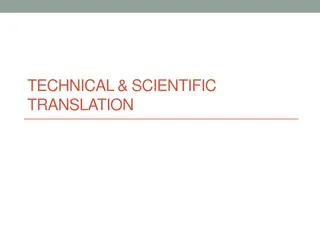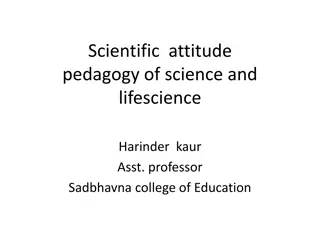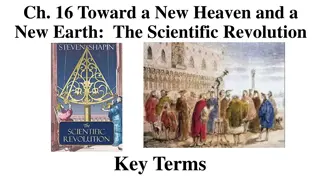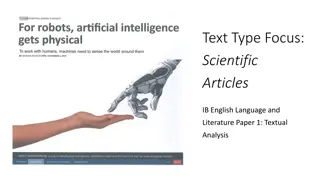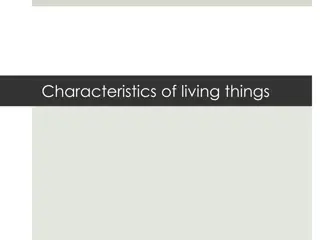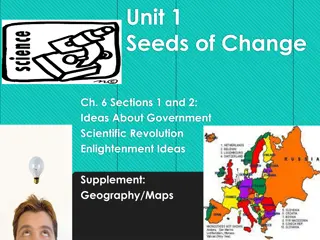The Evolution of Spontaneous Generation: A Scientific Journey
Explore the historical progression of the Spontaneous Generation theory through the experiments and discoveries of scientists like Redi, Spallanzani, and Pasteur. Witness the shift from the belief that living things can arise from non-living matter to the establishment of biogenesis principles. Follow along as each experiment refutes the notion of spontaneous generation, paving the way for a deeper understanding of life's origins.
Download Presentation

Please find below an Image/Link to download the presentation.
The content on the website is provided AS IS for your information and personal use only. It may not be sold, licensed, or shared on other websites without obtaining consent from the author. Download presentation by click this link. If you encounter any issues during the download, it is possible that the publisher has removed the file from their server.
E N D
Presentation Transcript
Our Story in 2 minutes http://www.youtube.com/watch?v=MrqqD_Tsy4Q
Spontaneous Generation Before the 17thcentury the belief of where life came from was Spontaneous Generation: Living things come from non-living things Ex. Throwing waste into the street creates rats and flies 3 scientists tested this hypothesis: Redi Spallanzani Pasteur
Slow Death of Spontaneous Generation On the back of the article, there is a chart to show how the three scientists experimented with Spontaneous Generation. Copy the chart in your science notebook and fill in the chart (in your notebook) as you read the article.
Tuesday 1/27/2015 Evolution Evolution Agenda: Evolution Notes: Spontaneous Generation Notes: Biogenesis Activity: Human Hand Adaptation GRADE CHECKS TODAY! (1st Hour Only) Homework/Class Work: No Homework Tonight!
Scientists Hypothesis Draw the Experiment 2 jars with meat: one covered with cheese cloth & other open Results Conclusion The uncovered jar had maggots & the covered one didn t Redi Maggots developed from eggs of flies Spontaneous generation does not occur Boiling liquid will kill microorganisms Boiled broth into a flask, sealed & waited Microorganism s grew in the flask Spontaneous generation DOES occur Needham Microorganisms are produced by other microorgansisms Sealed flask of chicken broth took out air & boiled it Spallazani No Spontaneous generation does not occur. microorganisms grew Pasteur Boiled chicken broth in flask & curved neck into sideways S shape. Microorganisms are produced by other microorgansisms No Spontaneous generation does not occur. microorganisms grew
Redis Experiment 4 jars of meat Two open jars vs. two closed jars Result: Maggots and flies were only found in the open jars What do these results tell us?
Spallanzanis Experiment Boiled meat broth in 2 flasks Open flask vs. sealed flask Result: After three days, the broth in the open flask was cloudy = microorganism growth What do these results tell us?
Pasteurs Experiment He redid Spallanzani s experiment Used a curved neck flask Left it open for one year Result: remained clear Broke the neck Left it for one day (it was cloudy) What do these results tell us?
Conclusion to all 3 experiments: spontaneous generation has been disproved! The New hypothesis: Biogenesis: all living things come from other living things.
How are organisms broken up?? Species & populations!
SPECIES: A group that is reproductively isolated (organisms that can breed & produce fertile offspring) QUESTION: Can two different species mate & produce an offspring?
THIS IS A LIGER THIS IS A MULE
The Liger Male lion and female tiger Like most hybrids they are sterile However an occasional female has been found which can reproduce. No fertile males have been found.
POPULATION: a group of individuals of the same species that are not prevented from breeding & producing offspring. QUESTION: QUESTION: Name one circumstance in which 2 groups of a single species of squirrel might be prevented from breeding with each other. ANSWER: ANSWER: The groups may have gotten separated geographically and are unable to interact or breed.
ADAPTATION: is any inherited characteristic that increases an organism s chance of surviving in a particular environment. FITNESS: an organism s ability to survive in order to reproduce in an environment.
Human Hand Adaptation Each PAIR should have a bucket & a yellow handout What is NOT included: Masking tape Pencil Book Shoe Backpack with zipper
Wednesday/Thursday 1/28-1/29/2015 Evolution Evolution Agenda: Evolution Activity: Finish Human Hand Adaptation Notes: Adaptations Activity: Zygoozles Homework/Class Work: No Homework Tonight!
TYPES OF ADAPTATIONS 1. Structural 2. Behavioral 3. Physiological Let s look at each type as we consider 2 species: the tundra & icecap-dwelling arctic fox & the desert dwelling fennec fox.
arctic fox (Alopex lagopus) fennec fox (Vulpes zerda) Structural Adaptation: The form that the organism takes. EX: Big ears and small ears of foxes. Heat escapes easily from the blood that passes through the vessels in the fennec fox s ears. Cool blood from the ears then circulates through the body & keeps the fennec fox from overheating.
Behavioral Adaptation: These are innate or inherited actions that individuals of the species perform. Arctic fox: Can be active any time of the day; ready to find food whenever available. Fennec fox: Is nocturnal; sleeps during the day & hunts at night
Physiological Adaptation: Related to the biochemical processes at work within an organism s body. Compare the processing of food & water: Arctic fox: food is scarce in winter; effective at storing food energy as fat. Fennec fox: little free water available; adapted to get all moisture it needs from fruit, roots, & leaves.
Adaptations Work Together Adaptations work together to produce a species fit for surviving in a specific environment. The big ears(structural) cools fox & gives acute hearing which helps when fox hunts & night (behavioral) & the fox has special retina; tapetum (physiological) that gives the fox night vision.
PROCEDURES 1. You will examine the zygoozles. Discuss the similar & different traits the organisms possess. 2.Cut out each organism. Decide which organism represents the ancestral form (you get to pick). 3.Arrange the organisms in the order you believe they evolved. 4. Once you have decided where the pictures will be, glue the pictures in place on the paper.
PROCEDURES 5. Draw an arrow between each picture and state the change to show the direction of evolutionary change. 6. Choose 5 arrows and write a statement by each picture to justify the change that occurred. 7. Draw a picture of the fossil that could evolve next. Explain why the creature would have the traits you gave it. Describe a structural, behavioral and physiological adaptation 8. Color and decorate your paper to make it appealing.


